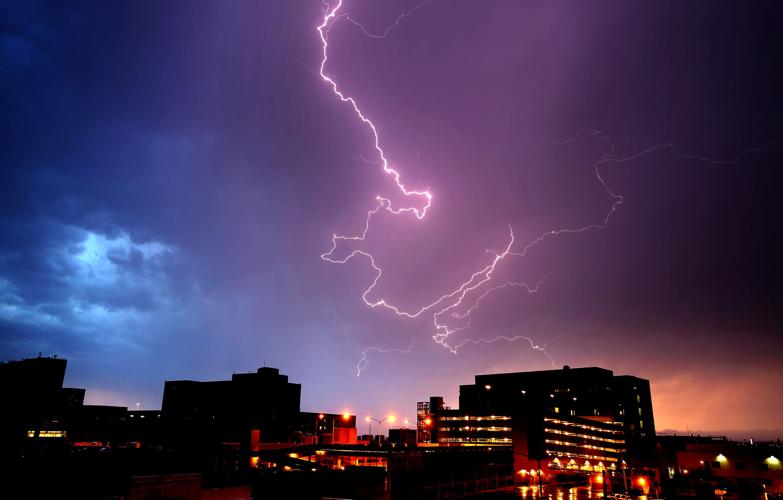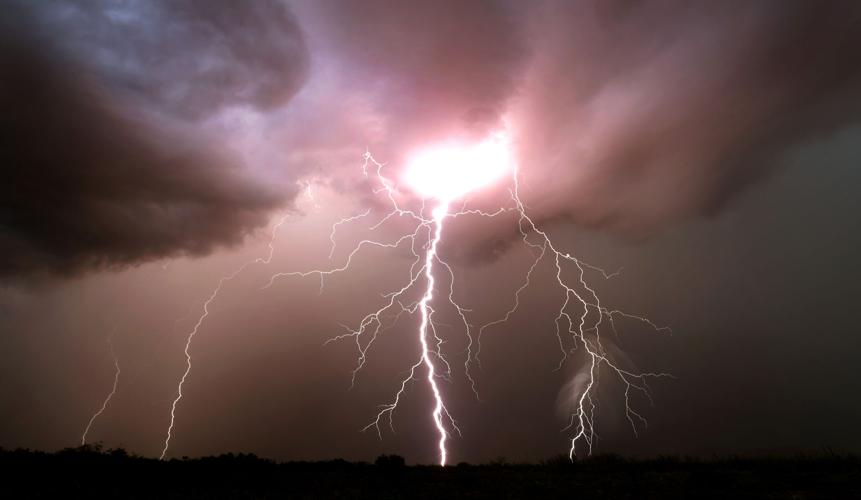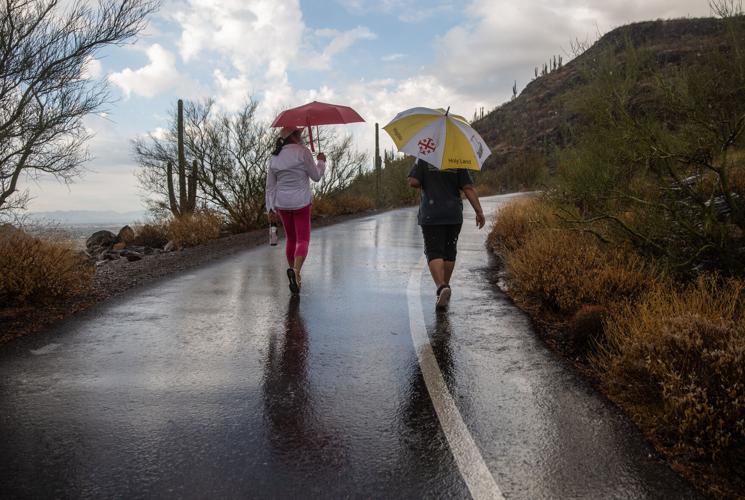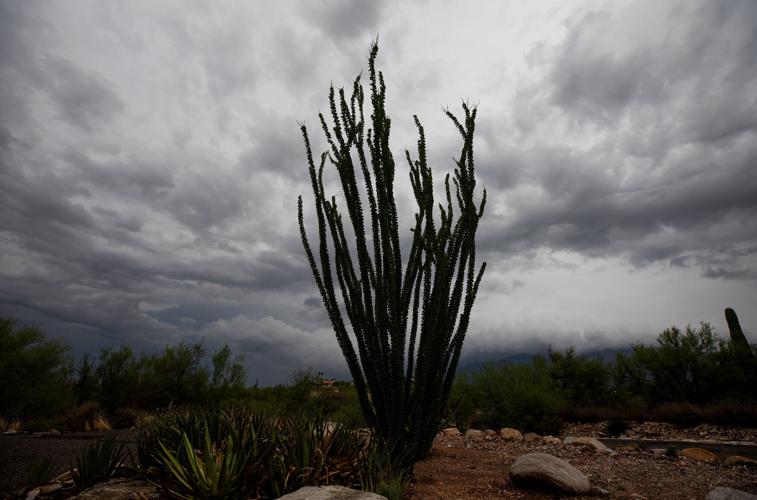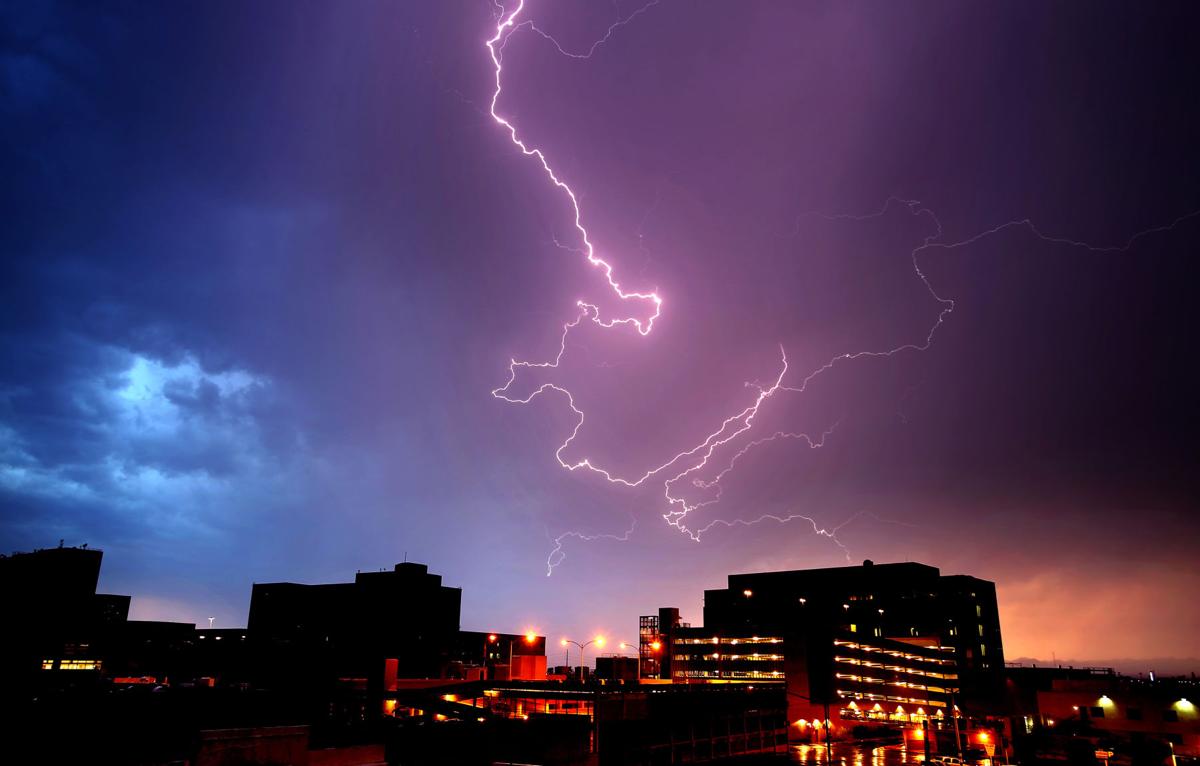It's summer in Tucson and there's one thing on our minds: monsoon season.
As the days get hotter, the clouds begin to build up from the south and move north into the city, where they gift us with glorious, much-needed summer rain.
With the last two years bringing some of the most extreme monsoon seasons — the second driest in 2020 with a bleak 1.62 inches and the third wettest in 2021 with a whopping 12.79 inches — along with coming off of a dry winter, what can we expect this year?
“That’s the million-dollar question,” says Mike Crimmins, a professor and extension specialist at the University of Arizona’s Department of Environmental Science, who focuses on applied research and outreach on climate-related issues in the Southwest.
“What the models are suggesting is that it could be wet up front and then it could kind of peter out through the end of August and into September,” he says.
Crimmins predicts that this upcoming monsoon will be wetter than usual — but not much above the average. The average rainfall for the Tucson monsoon season is 5.55 inches, according to the Arizona Daily Star.
Although monsoon season technically starts on June 15, according to the National Weather Service, Crimmins says not to expect monsoon thunderstorms until the last week of June, which he considers early for us, and the first week of July.
Typically, we don’t see “good solid moisture for monsoon activity” until around July 4, according to Crimmins.
“The models are suggesting that we'll have monsoon activity show up maybe a little bit early and maybe robustly in July,” he says. “So it looks similar to the setup for last year, but that doesn't mean that it will be exactly the same as last year. But right now, I'm pretty optimistic that at least we'll start on time, if not a little early and, hopefully, July will be wet.”

Walkers shelter underneath their umbrellas as they make their way up Tumamoc Hill, on July 23, 2020.
So, what factors impact the monsoon season?
There are three essential elements for a good monsoon — having strong weather activity in southern and central Mexico, the Gulf of California heating up and the wind reversing directions, according to Crimmins. These critical factors cause the monsoon thunderstorms that we know and love to build up in the south and make their way up north.
“Most of the year, it's (the wind) blowing down the Gulf of California and what happens at the beginning of monsoon, it turns around and it starts to blow up the Gulf of California and that's our main ‘fuel’ source, that's the main moisture source,” Crimmins says.
The average monsoon season will also feature “bursts” and “breaks,” Crimmins says.

Several bolts strike in the foothills of the southern Rincon Mountains as an intense monsoon cell rolls into Vail, Ariz., July 30, 2021,
“We can have storms and then it can retreat, get a week off, and then you're just expectantly waiting for it to rebuild, and then it will come back in,” he says. “A good, average monsoon season will have that kind of burst and breakthrough the whole time.”
While some may think that a monsoon refers to an individual storm, the word “monsoon” refers to the entire season, which in Tucson ends on Sept. 30.
Crimmins says the word “monsoon” comes from Arabic roots and means “reversal of wind,” adding that’s “exactly what we're looking for when we look to the monsoon season to start.”
Although we are expecting a wetter-than-average monsoon season this year, the warm temperatures are here to stay, thanks to a little thing called climate change.
“The trend with climate change has made every summer hotter on average than the previous summers,” Crimmins says. “The trend is there and what really kind of blew my mind last year was when you looked at how wet it was in July and how cloudy it was, it wasn't actually that much cooler. It actually brought the temperatures on average down to about average. So right now, the outlook for the whole summer is still above average, even if we have wetter than average conditions.”

Clouds fill the sky behind a large ocotillo following a rainstorm on E. River Rd. in Tucson, Ariz. on July 14th, 2021.
For all the weather enthusiasts, the University of Arizona’s Arizona Institute for Resilient Environments and Societies is hosting “Southwest Monsoon Fantasy Forecasts,” inspired by fantasy sports, where “players estimate the total monthly precipitation at each of the five major cities in the U.S. Southwest Monsoon region: Tucson, Phoenix, Flagstaff, Albuquerque and El Paso” throughout July, August and September.
The two players with the most points by the end of the monsoon season will receive an “Ambient Weather automated backyard weather station” that has an estimated value of $400, according to the Southwest Monsoon Fantasy Forecasts website.
As monsoon begins to make its way to Tucson over the next month, remember to stay safe this season by checking the National Weather Service Tucson's website for the latest weather forecasts, and, of course, "turn around, don't drown," when driving near flooded areas.
“I'd love to see the wet conditions, as long as it isn't destructive and it doesn't harm anybody,” Crimmins says. “And that's part of living with the monsoon, is we need to be kind of, you know, respectful of it. But seeing all of that rainfall would be so beneficial in so many ways.”


